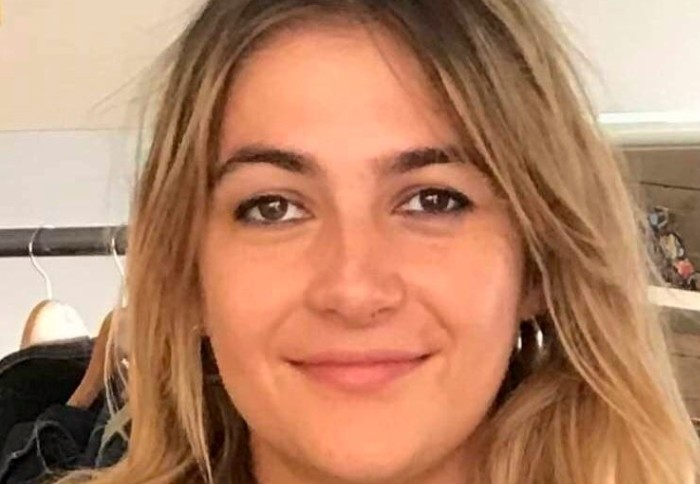Introducing Dr Freya Storer - new Research Associate in Developmental Biology


We interviewed Dr Freya Storer - a new Research Associate in Developmental Biology who joined us in February.
Can you tell me a little about your background?
I was born into a family of contrasting interests. My father studied engineering and now works in intellectual property, whilst my mother studied languages, going on to teach French and Italian. Being surrounded by different passions has always helped me to explore topics using a holistic approach.
Although I am a British national, I had a largely European upbringing. Due to my father’s job, we moved around, after a brief period in the UK, we moved to Normandy (France) and later to Bavaria (Germany). It was only as I left for university that I established myself back in the UK, and even then, it hasn’t been static. The freedom to move and explore education through different cultures has been a privilege and lends itself to the collaborative nature of academia.
Can you tell us a bit about your study prior to now?
My interest in biosciences was nurtured at the University of Bristol, where I read Cellular and Molecular Medicine, a course that married genetic mechanisms with microbiology and disease. It established a broad foundation on techniques to study cellular processes, applying them to diverse medical contexts from cancer metastasis to pathogen-host evasion tactics. It was during my final year project that I was first introduced to the organism that I work with today.
Drosophila melanogaster, a well-characterised invertebrate model, has been central to many discoveries in the field of genetics and comes with an array of technical possibilities. In my bachelors, I worked with Prof. Will Wood and Dr Andrew Davidson on a project investigating the key regulators of actin during debris clearance by Drosophila embryonic haemocytes. Thanks to this opportunity, I pursued a research masters in a neighbouring lab, under Dr Marc Amoyel, where I studied how differing translation initiation mechanisms might drive the decision of stem cell fate in the Drosophila testis niche.
Having committed myself to the fruit fly, I ventured into the field of neuroscience during my PhD at the Dementia Research Institute in Cardiff. With the support of Dr Gaynor Smith, I identified two genes that may regulate the immune responses of the brain contributing to Alzheimer’s pathology. Most recently, I worked with Dr Peter Lawrence and Dr Jose Casal at Cambridge University, where we studied the distribution of Frizzled during pupal development to understand the mechanisms that govern planar cell polarity.
What is your new role at Imperial?
I recently joined Dr Tony Southall’s team as the newest Research Associate. Here, I am working on a unique project to understand the genetic factors that mediate neuronal cell fate plasticity. We have come far since “Waddington’s landscape” model of cell differentiation, with increasing evidence suggesting that cells may in fact (under certain conditions) return to an earlier state. We hope to use novel tools, such as adapted CRISPR methods and DamID to explore how the shift between eu- and hetero-chromatin states, through most translational modifications, can restrict plasticity. Research is a core part of my position, but I am also devoted to cultivating a friendly and inspiring learning environment for aspiring researchers and students.
What motivated you to work in this area?
My project incorporates all my experience and interests, combining my extensive knowledge of cellular mechanisms and development, with Drosophila biology. It means it feels familiar, but I am also learning something new in epigenetics, a complex research field which I have always been captured by and wanted to study. I am also honoured to work with Dr Tony Southall, who has already made tremendous progress in the field and designed numerous innovative tools to study it. I believe it is easy to be motivated to study biosciences, as it satisfies a curiosity for the natural world with the possibility of contributing to new therapies that may solve devastating diseases.
What attracted you to working in Life Sciences at Imperial?
I was excited to be a part of the rich history of discovery that has produced so many internationally renowned and impactful scientists, from Nobel laureates to pioneering female scientists such as Helen Porter and Winifred Watkins. The project I am working on feels meaningful and I feel privileged to share the halls with some of today’s brilliant minds, who inspire me to go beyond my expectations of research. I am arriving at an exciting time in Imperial’s evolution, with the introduction of the White City Campus expanding the possibilities for entrepreneurship and multidisciplinary research. Beyond that, London is home to a large community of geneticists and entomologists, providing a space for collaboration and the sharing of ideas.
Tell us an interesting/unusual fact about yourself.
Other than my obvious enthusiasm for science and research, I love music. I am an avid listener but have also enjoyed performing in bands as a singer/keyboardist.
Article text (excluding photos or graphics) © Imperial College London.
Photos and graphics subject to third party copyright used with permission or © Imperial College London.